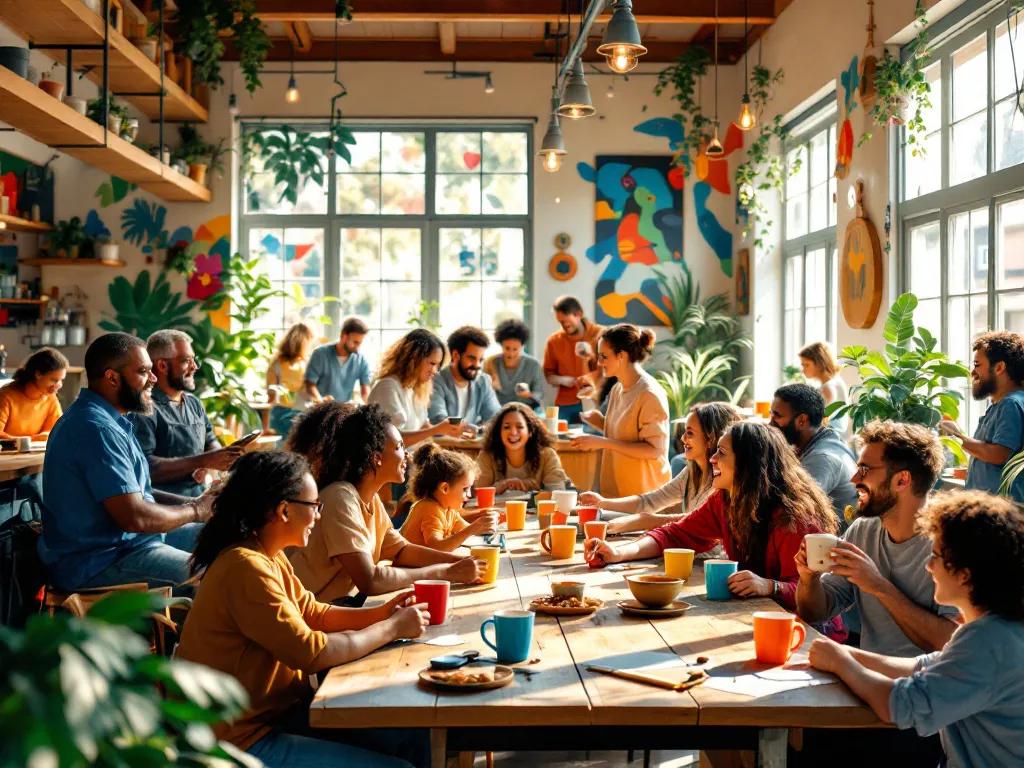Harnessing Community Support for Personal Resilience: Building Strength Together

Last updated: November 20, 2024
Explore how cultivating strong community bonds can enhance personal resilience, helping individuals and communities emerge stronger from life's challenges.
Harnessing Community Support for Personal Resilience: Building Strength Together
Introduction
Hey there! Have you ever tried lifting something heavy, like your school backpack after a weekend full of homework? It feels lighter when a friend helps, right? That’s kind of how resilience works. Personal resilience is like your inner superpower that helps you bounce back after life’s challenges, like missing homework or even bigger adult problems like losing a job. But guess what? This superpower gets even stronger when you have your community's support—like friends, family, and neighbors—by your side.
In today's blog post, we'll explore how community support can make us more resilient, why it’s important, and how we can all join in building a community that sends out superhero vibes. By understanding these concepts, we can all help each other become stronger. So strap in, let's explore this together!
The Essence of Personal Resilience
Imagine resilience like a springy bungee cord. It stretches and bends but returns to its original shape. Personal resilience is our ability to handle stress and bounce back from challenges, and it’s super important for everyone because life isn’t always smooth sailing.
Resilience is like having an internal toolbox where you keep tools ready to deal with things when they don't go your way, like handling stress, disappointments, or big life changes. Here's a more detailed look at how daily challenges shape our minds and bodies.
But resilience isn’t just about going it alone. Our little toolboxes become more powerful when we connect with others through community networks. When people around us lend a hand or just an ear, it helps us build stronger bonds—and that’s where the magic happens! This article beautifully explains how our brain aids in building resilience.
Understanding Community Support
Imagine your community as an enormous collective hug. Community support can come in many shapes and sizes. It includes things like friends, family, teachers, neighbors, clubs, or even online groups that make us feel like we belong. These are different from just acquaintances because they truly care, support, and help nurture each other’s resilience.
This support helps entire communities recover and grow stronger, which is often called community resilience. A lot of wonderful work and strong recovery efforts can emerge from a united community. Learn how your daily challenges contribute to your personal and collective resilience in this insightful post.
For instance, think about libraries, sports teams, or community centers. These are places where you have fun, learn, and meet new people who can support you. They create a safety net that catches us when we fall.
Building Community Resilience
Communities are like interlocking pieces of a huge puzzle. They become stronger when they stick together. A resilient community is ready for almost anything, even challenging events like natural disasters or big social changes.
Innovative practices in community recovery aren’t just about picking up after a storm but building better, stronger connections for the future. This article dives into innovative strategies for resilience.
A robust recovery network means there’s always someone to call, places to go for help, or programs that teach new skills. Just think of how much more capable and less scary challenges feel when you’re not facing them alone!

Strategies to Harness Resilience Through Community Support
Creating Supportive Social Networks
Making strong and supportive social networks involves much more than just having a lot of people in your contacts list. It's about forming genuine connections where people truly care for each other. We can create and sustain these supportive networks by joining clubs, volunteering, or simply being a good friend.
Social connections are vital for personal resilience because they often act as our support cushions when we fall. They offer comfort, advice, or sometimes just a listening ear—that’s more valuable than gold!
Cultivating Social Capital
Social capital is like a big bank of trust and goodwill. Imagine it as the friendships and networks that build up over time, which you can rely on when times get tough. The more you put into this piggy bank of social capital, the more you can potentially draw when you need support.
We foster this by engaging in community activities, helping neighbors, or attending community events. Every smile or kind action deposits a little bit in this bank of trust. There's plenty to learn about growing these bonds in this engaging read.
Resilience After Natural Disasters
Imagine waking up to see that a hurricane has visited your neighborhood. Communities often face challenges during such natural disasters. But, with everyone's collective effort, these challenges can roll back like a tumbling tower of Jenga blocks.
Communities can rally together, offering shelter, food, and emotional support to rebuild stronger and more supportive networks. Real-life examples show us that people coming together can bring about significant change and recovery. In many instances, community bonds not only repair physical damage but also mend hearts. These stories of resilience continue to inspire and have a lot more to unfold here.
The Power of Social Bonds and Connections
Never underestimate the power of friendships! When it comes to mental well-being, social bonds offer emotional benefits, reducing feelings of loneliness and boosting feelings of happiness.
Imagine being part of a team, where everyone works together. This is what it feels like to have a strong community network. These case studies reflect on how such networks help in bouncing back during difficult times.
Crisis Response Efforts and Community Solidarity
In urgent situations, communities can come together quickly to offer help and comfort. One example is the Crisis Emotional Care Teams, which are like our real-life heroes offering support when disasters strike, helping nurture individual and community resilience (more about their crucial role in this article).
Quick response efforts following a crisis can provide immediate relief and long-term rebuilding, showcasing how community bonds are the backbone of its strength and support system.
Fostering Resilience for Future Generations
As they say, children are the future! Encouraging young people to build supportive networks and develop strong social connections sets the foundation for resilient communities. Educational programs that focus on resilience are just as important as math or science classes!
There are many community initiatives, like neighborhood games or educational clubs, that can help build these lifelong networks. And the future looks promising if we continue to reinforce these community bonds! Explore these forward-thinking perspectives on resilience.
Conclusion
As we wrap up, remember, building personal resilience is just as much about getting stronger by yourself as it is about leaning on others. Community support can be like a warm sunbeam breaking through the clouds, offering light and warmth to everyone in its reach.
Get involved, make connections, and cherish the community around you because it's these relationships that make life's hurdles a little less jumpy. With community support, our internal bungee cords of resilience don’t just bounce back—they bounce higher, reaching unity, strength, and togetherness.
Thank you for exploring the importance of community resilience with us—let's continue to support each other and grow stronger together!